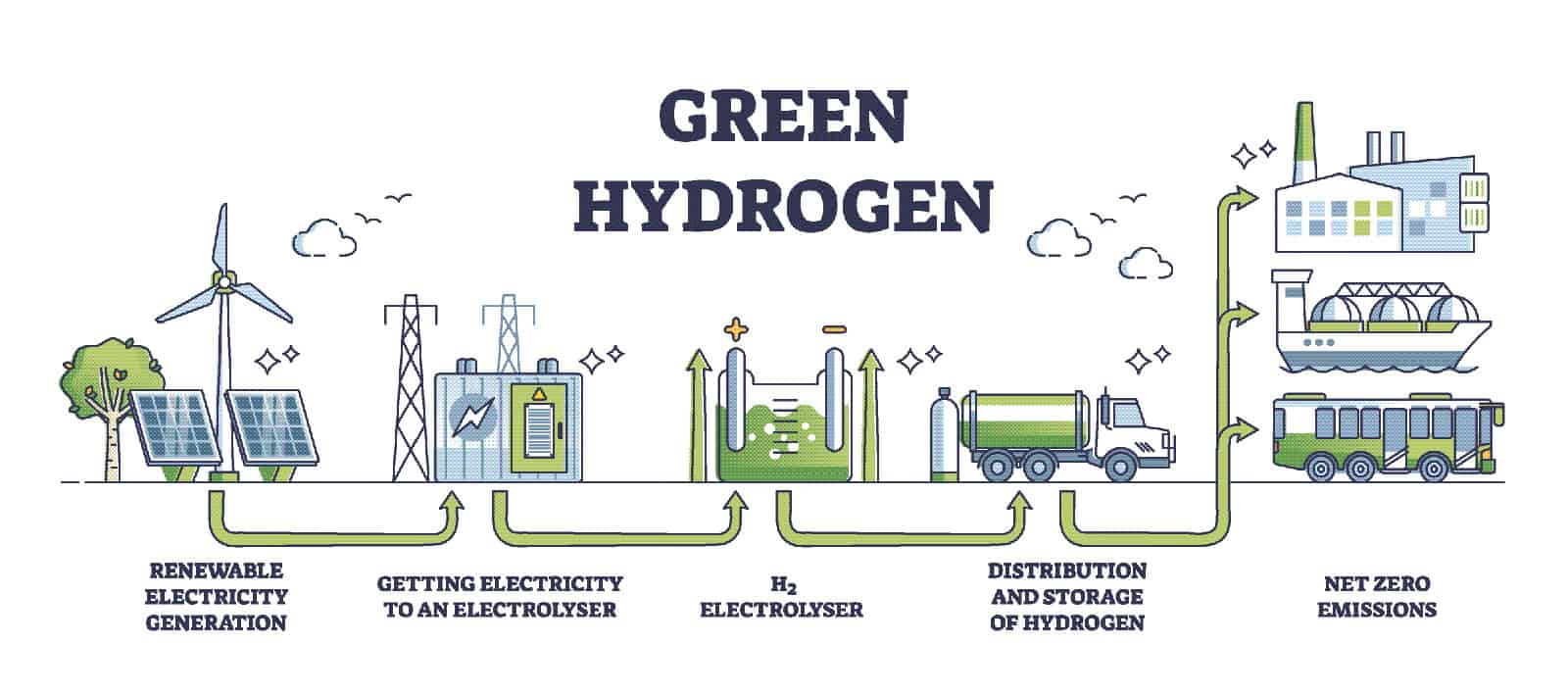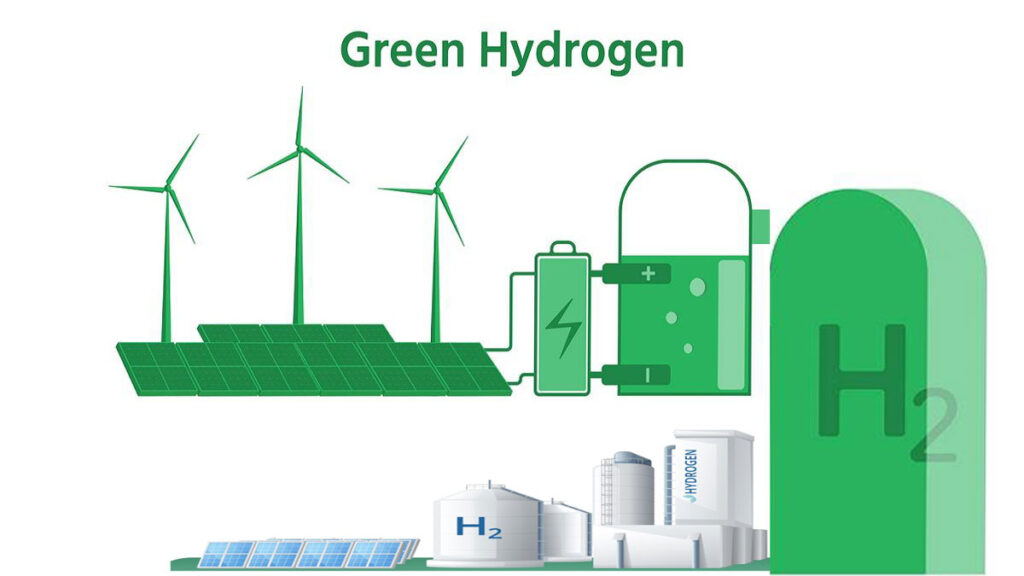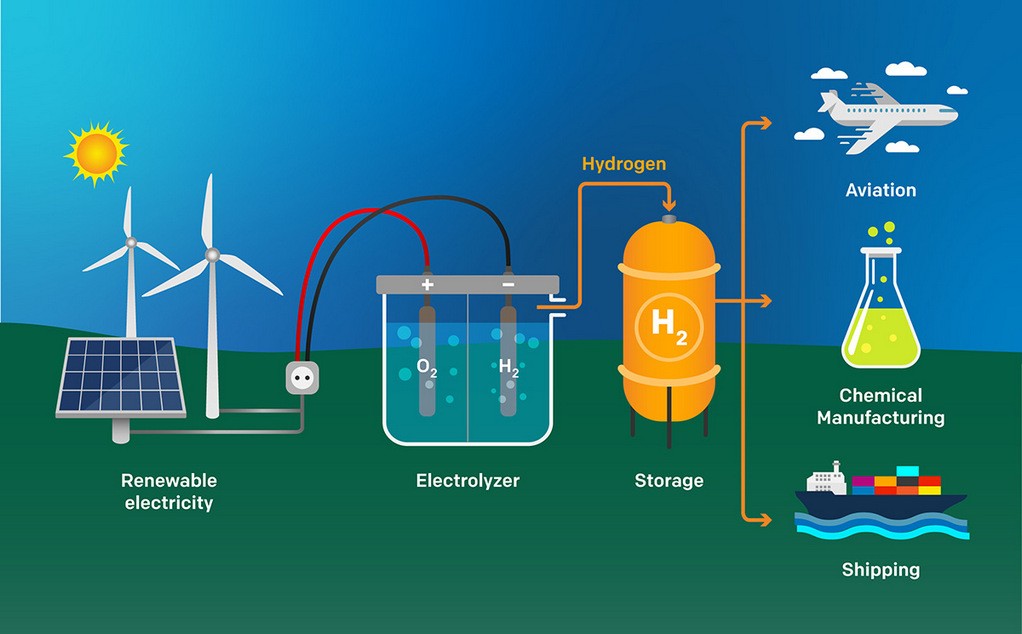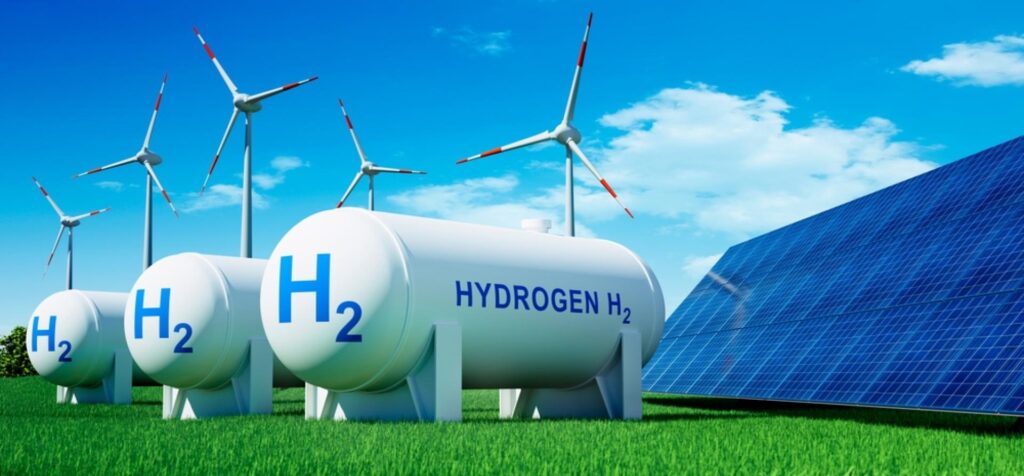Green-Hydrogen
About Green-Hydrogen
Green hydrogen (H2) is a versatile energy carrier that can be applied to decarbonize a wide range of sectors. It can be used directly or in the form of its derivatives like e-Methanol, e-Ammonia, or e-Fuels to replace fossil fuels like coal or gas.
Only around 40% of global carbon dioxide (CO2) emissions originate from power generation which can be decarbonized via electrification. The other 60% of CO2 emissions originate from industry, mobility, buildings and others. These can be decarbonized via sector coupling, using green hydrogen and its derivatives to make renewable energy available to those sectors. This is why the production of sustainable hydrogen is so important for the energy transition.
Get in touch with us

How we make Green-Hydrogen
When hydrogen is obtained from hydrocarbons, such as natural gas or coal, the carbon constituents leftover combine with oxygen and form carbon-dioxide, a critical greenhouse gas. This is called Brown, Black or Grey Hydrogen based on process used.
Hydrogen can instead be separated from water through a process called “electrolysis”, which is a completely carbon-free process using renewable energy. This is called Green Hydrogen.
Green Hydrogen is going to play key role in reducing emissions within globe.


Our Aim to produce Green-Hydrogen?
Green Hydrogen’s ascent paved the way for an alternative source of energy imperative for a cleaner and greener planet. The recent surge in investments in Renewable energy has expedited investments in Green Hydrogen. To add fuel to the fire, supply-chain disruptions shook the reliance on some countries for fossil-fuel supply. A world that continuously adapts to changes in demands is diverting its funds towards this alternative energy source. Green hydrogen is the most effective way to decarbonize the energy sector and achieve Net Zero emissions.



